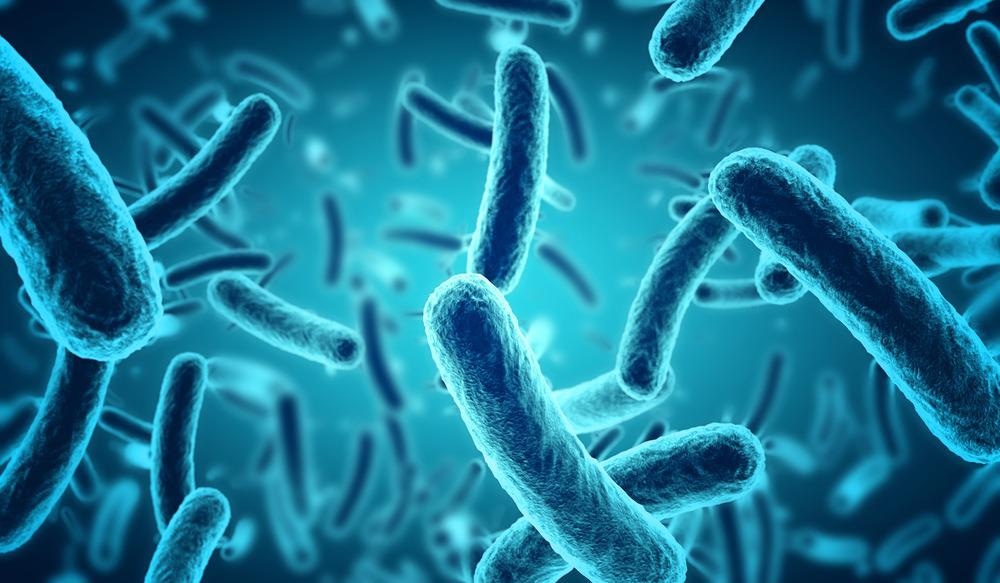The novel study published in the journal Biomaterials focuses on a new therapy for antimicrobial therapy into microbes’ microglia that was created to promote drug accumulation in subcellular habitats and curative antibiotic action against microbial infection.

Study: A bioinspired hierarchical nanoplatform targeting and responding to intracellular pathogens to eradicate parasitic infections. Image Credit: paulista/Shutterstock.com
Hazards and Challenges of Bacterial Infection Treatments
Intracellular microorganisms with developed bacterial resistance are blamed for serious bacterial infection-related health consequences.
Bacteria that persist within phagocytes are protected from the immune response and are more likely to transition to a temporary morphology known as persisters, which exhibits a latent condition that tolerates fatal medication doses.
Staphylococcus aureus, in addition to familiar intracellular bacteria like Salmonella, Brucella, and Mycobacterium TB, has evolved as another form of microbe able to exist within the human host. The persistent type of Staphylococcus is S. aureus.
Antibiotics' limited effectiveness in targeting intracellular microorganisms has led to the development of alternative treatment techniques, in part owing to inadequate barrier permeability and vulnerability to medication efflux transporters.
Nanoparticles Drug Carriers and their Limitations
To transcend intracellular obstacles and improve therapeutic benefits, researchers have concentrated on employing pharmaceutical nanoparticles such as metals, highly porous silica, and polymeric nanoparticles to address pathogenic microbes.
The use of nanomaterials as drug carriers for antibacterial and antimicrobial peptides leads to higher intracellular drug concentration and therapeutic effectiveness. Furthermore, the use of new antibacterial cell-penetrating molecules has emphasized the need for treatments to be self-delivered into cell cultures.
However, because of their unregulated intracellular internalization levels, these intracellular delivery systems that employ a non-receptor-dependent strategy to penetrate intracellular pathogens potentially fail to enhance the efficacy of antimicrobial medications against intracellular infections.
A few efforts have been made to reintroduce pharmaceuticals into microbial pathogens using pharmaceutical nanoparticle carriers that attack intracellular infections.
Although the particular antibiotic treatment showed promise in avoiding internalized S. aureus infections, scavenging S. aureus that had already colonized and proliferated in the cells may be problematic.
For systemic medication administration to decrease internal microbes, an antibacterial medication that only activates in the intracellular environment is required, since it can limit unwanted effects on normal functional tissues.
However, combining infected individual selectivity with a selective internal drug release in a single approach to substantially reduce cytotoxic effects and increase antibacterial therapeutic effectiveness against internal pathogenic bacteria remains extremely difficult.
Research Findings on Bacterial Aggregation Properties
To fabricate a pathogen-responsive cargo delivery platform, the TPE-functionalized glycopolymers TPE-PMAMA-co-PLAMA and PCL-b-PAAPBA were prepared.
By stable hybrid culturing for 3h at 37 °C in the vicinity of S. aureus, the microbial agglomeration capabilities of structured NPs were investigated.
These findings revealed that NPs caused intense agglomeration of S. aureus, owing to the PBA subunits in the PCL-b-PAAPBA copolymer's functionality.
In the presence of the NPs, the optical density of S. aureus in the effluent at a wavelength of 600 nm (OD600) decreased more swiftly than in the PBS group.
According to the CLSM data, among all NPs tested, the T-r/40 or T-b/40 NPs caused the most-fast aggregation of S. aureus within 3 h, culminating in the deposition of more than 80percent of the entire germs.
Bacterial Internalization and Biocompatibility Results
Investigations were performed to see if the PBA-based nanoplatforms could target S. aureus selectively. It was visible on the cell walls of the treatment microorganisms, demonstrating that the T-r/40 NPs were exclusively targeting S. aureus.
In terms of biomedical applications and biocompatibility, human blood was used to test the hemolysis of the produced NPs, and MTT tests were used to assess toxicity against RAW264.7 cells and human umbilical vein endothelial cells (HUVECs).
After 48 hours of treatment with varying doses of NPs, the viability of both RAW264.7 cells and HUVECs was better than 80%, showing that none of the NPs were particularly cytotoxic to the two kinds of human cells, demonstrating biocompatibility.
Along with this, results also confirmed Intracellular antibacterial activity, extracellular antibacterial activity, and bacteria-activated drug release.
In Vivo Antibacterial Efficacy
S. aureus was infected in Balb/c mice to determine in vivo efficacy and toxicity of T-r/40 Nanoparticles. The T-r/40 NPs caused no apparent histological abnormalities in the vital organs of Balb/c mice, including their heart, liver, brain, lungs, and renal systems, according to the results of hematoxylin and eosin (H&E) staining.
In summary, a novel multilevel nanoplatform has been developed to regulate precise antimicrobial delivery and distribution into affected living cells, as well as directed internal microbial elimination.
Continue reading: Ensuring Consumer Safety with Nano-based Antimicrobial Coatings.
References
Anon., (2021) A bioinspired hierarchical nanoplatform targeting and responding to intracellular pathogens to eradicate parasitic infections. Biomaterials. 121309. Available at: hhttps://www.sciencedirect.com/science/article/pii/S0142961221006657?via%3Dihub
Disclaimer: The views expressed here are those of the author expressed in their private capacity and do not necessarily represent the views of AZoM.com Limited T/A AZoNetwork the owner and operator of this website. This disclaimer forms part of the Terms and conditions of use of this website.